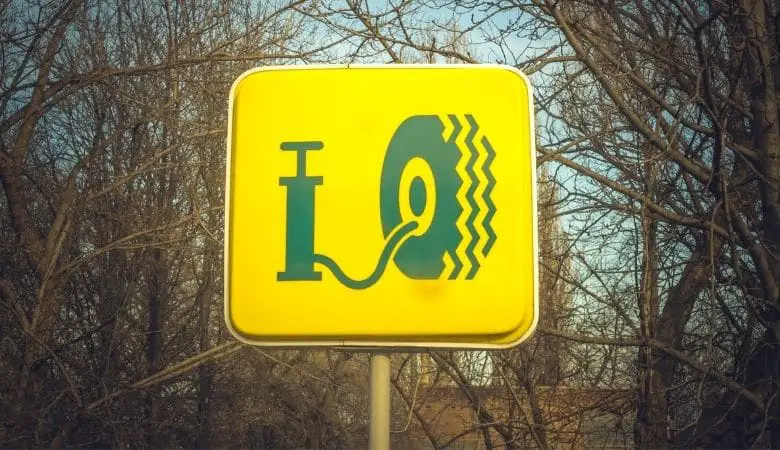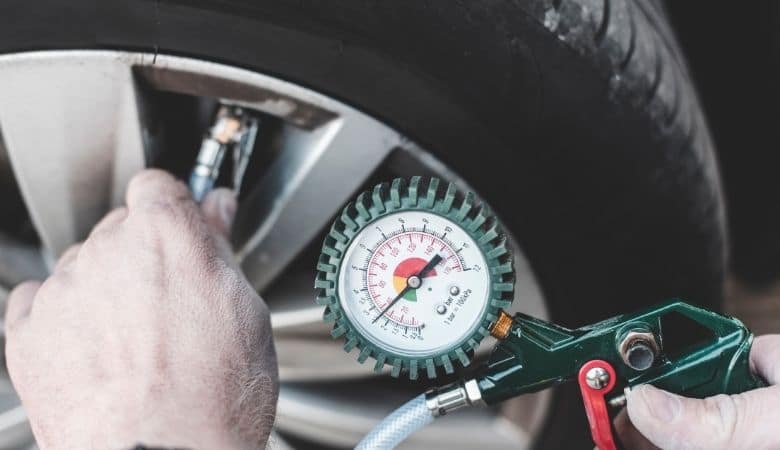So, you have new tires installed on your car or truck, and you’re unsure what the correct air pressure should be. Here’s how to find out:
The correct air pressure for your car tires are what’s stated in the driver’s side door jamb or in your owner’s manual. Most car manufacturers recommend between 33-36 PSI for passenger cars. Add 3-5 PSI during cold weather and remove 3-5 PSI during warm weather.
Read on to learn more about the correct air pressure for your car tires, and how to find measure it.
Why It’s Important to Drive With Ideal Tire Pressure
Driving with ideal tire pressure is important for safety, car/tire longevity and fuel efficiency. Sure you’ll be able to drive your car for a while with slightly under, or over-inflated tires. But doing so for too long will cause unnecessary stress on your tires, leading to excessive wear and possible blowouts.
Driving with incorrect air pressure is bad for fuel economy, as properly inflated tires create less rolling resistance, helping your car to consume less fuel. If anything, it’s been shown that driving with under-inflated tires are worse overall than driving with over-inflated tires.
In fact, under-inflated tires can have a significant impact on fuel economy. Studies have shown that you’ll waste an average of $200 per year (for the average yearly driving distance in the US) in extra gas when driving with below ideal tire pressures.
Under-inflated tires also increase your stopping distance by about 10-30% (the exact number depends on how much they’re under-inflated of course). This is dangerous during all circumstances, but especially when driving in rain or snow.
It’s actually been shown that driving with under-inflated tires increases your risk of having a fatal accident by more than three times.
Driving with under-inflated tires also significantly increases the wear of your tires, leading to you having to spend a lot of money buying new tires sooner than what you would actually have to.
Given that roughly 30% of drivers don’t even bother to check their tire pressure regularly, odds are you drive on misaligned tires way too often. So, before you hit the road, make sure your tire pressure meets industry recommendations.
How To Determine Tire Pressures
First, check your vehicle manual or door jamb. It’s common for different makes and models of cars to have slightly different guidelines about tire pressure. Your manual will detail what level of inflation is optimal for your vehicle’s tires based on whether you are driving in high temperatures or on rough terrain.
You can also search for a specific make and model of a car using keywords like car tire pressure or car tire size online. Look for a chart that details optimal pressures for different tire sizes and make sure yours fall within those ranges.
Once you have established what pressure is best for your car, you can use a tire pressure gauge (sometimes called a PSI gauge) to determine if your current levels fall within that range.
Outdoor Temperature Changes Optimal Tire Pressure

In general, optimal tire inflation levels vary depending on where you live, as different temperatures require more or less air.
During cold winter months, aim for about 3-5 pounds per square inch (PSI) above the recommended levels. During warm summer months, aim for about 3-5 pounds per square inch (PSI) below the recommended levels.
To figure out what that specific number is for your vehicle based on local weather conditions (i.e., average temperatures during different seasons), check online resources like TireRack and TireCheck.
How to Measure Your Tire Pressure
The easiest way to measure tire pressure, is to use an air pump with a tire pressure gauge. You can pick one up at most auto parts store. Most gas stations also have “do it yourself” stations for measuring tire pressure.

You should check (and fill if required) your tire pressure at least once per month during periods of colder weather and perhaps once every other month during periods of warmer weather.
Mind Your Tire Gauge
When it comes to gauges, it’s important to have one that conforms with industry standards. This means you should look for products made by reputable companies, including Nitto, Michelin, Bridgestone, and Goodyear.
These companies all adhere to international standards organizations like ISO-9002 certification from TUV SUD, so look for a product with these credentials.
The other part of selecting a good tire gauge is ensuring it fits your needs regarding accuracy, precision, and ergonomics – meaning how comfortable it is.
Conclusion
The correct tire pressure is a critical aspect of tire maintenance and safety.
Under-inflated tires not only run a higher risk of damage but also lower your gas mileage, cost you more money, and put you at risk for crashes. So, make sure you check the tire pressure on your car regularly.
Hi, my name is Niklas, the head content creator & CEO of Whirling Wheelz. I am very interested in vehicles of all kinds, mainly cars. I have a car mechanics degree from high school and a big hobby of mine is to follow the WRC (World Rally Championship) both online and through travel.


